Adopt Your Neighborhood
Jump or Dump
I’m lucky enough to live near a bus stop. Yesterday evening, when returning home with carry-out, I stepped off the bus, did a double-take in middair, and had to jump with my standing leg to avoid landing in a large pile of leaves and garbage. The pile took up pretty much the entire area of where the first rear door opens (in the image below, that’s between the tree and the blue recycling can), so in order to avoid it you would have had to exit out another door of the bus … or jump over it.
Today I found myself staring at that unhappy pile, watching people awkwardly circumnavigate it. I felt that not only was it an eyesore, but also that eventually someone was going to get hurt. There are a lot of elderly and disabled people who ride the bus. So I pulled on my gloves and gathered my equipment.
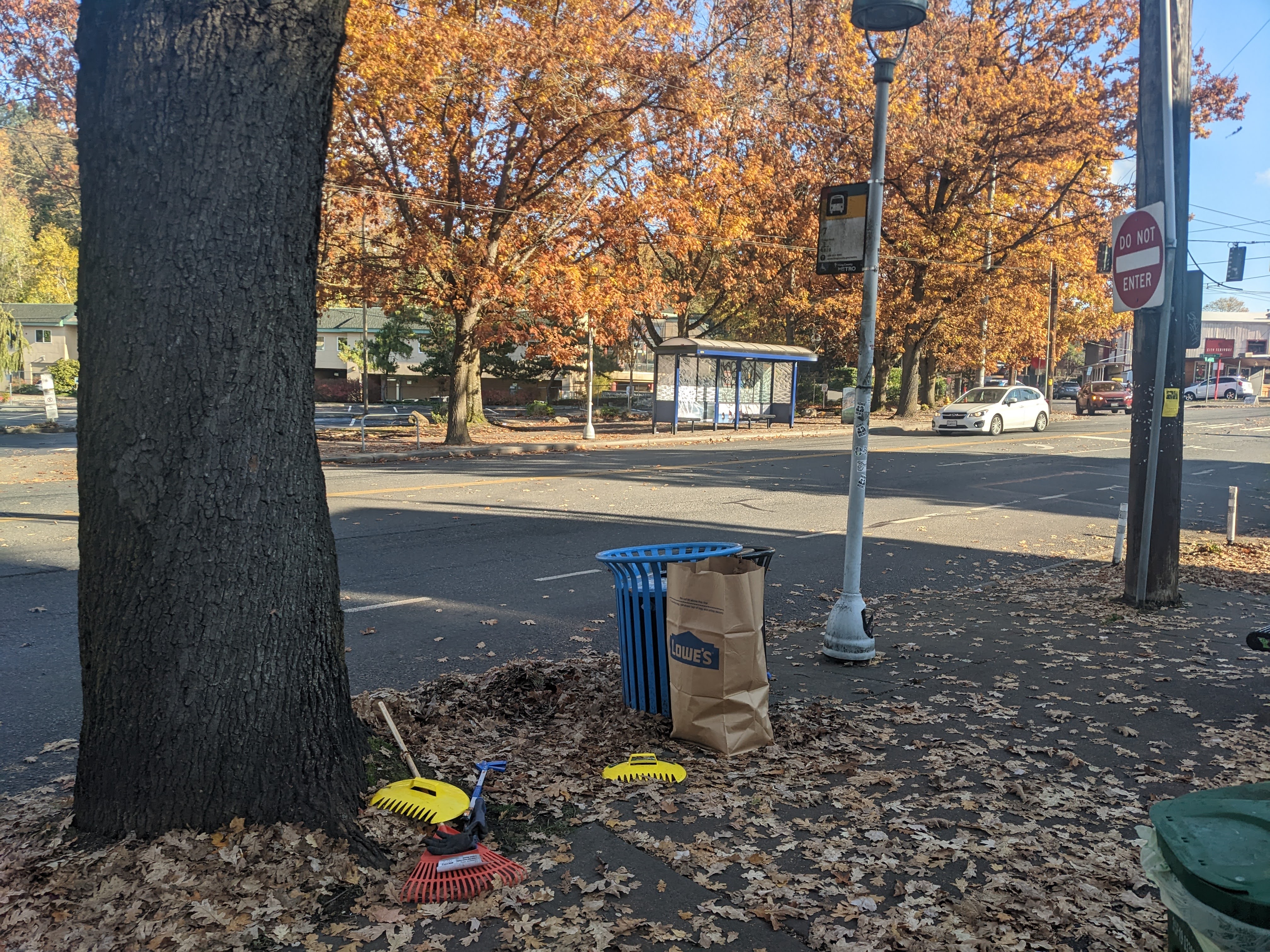 Pile of leaves at the bus stop. Imagine it was about three times the height; I had already started cleaning when I took this picture!
Pile of leaves at the bus stop. Imagine it was about three times the height; I had already started cleaning when I took this picture!
Cleanliness Is Not Free, But Cleaning Tools Sometimes Are
I’m also lucky enough to live in a city that hands out free gardening equipment. For the cost of going downtown for pickup, I got a rake, “leaf claws,” gloves, five-gallon bucket, trash grabber, and plastic and paper waste bags. Why? So that I can clean up storm drains.
The pile of leaves was on the curb of a major arterial with many drains. If it rained, the debris would certainly flow and clog the nearest downstream drains. So my equipment would create the value it was budgeted for! I attacked the pile and before another bus arrived separated it into compost, trash, and recycling waste streams.
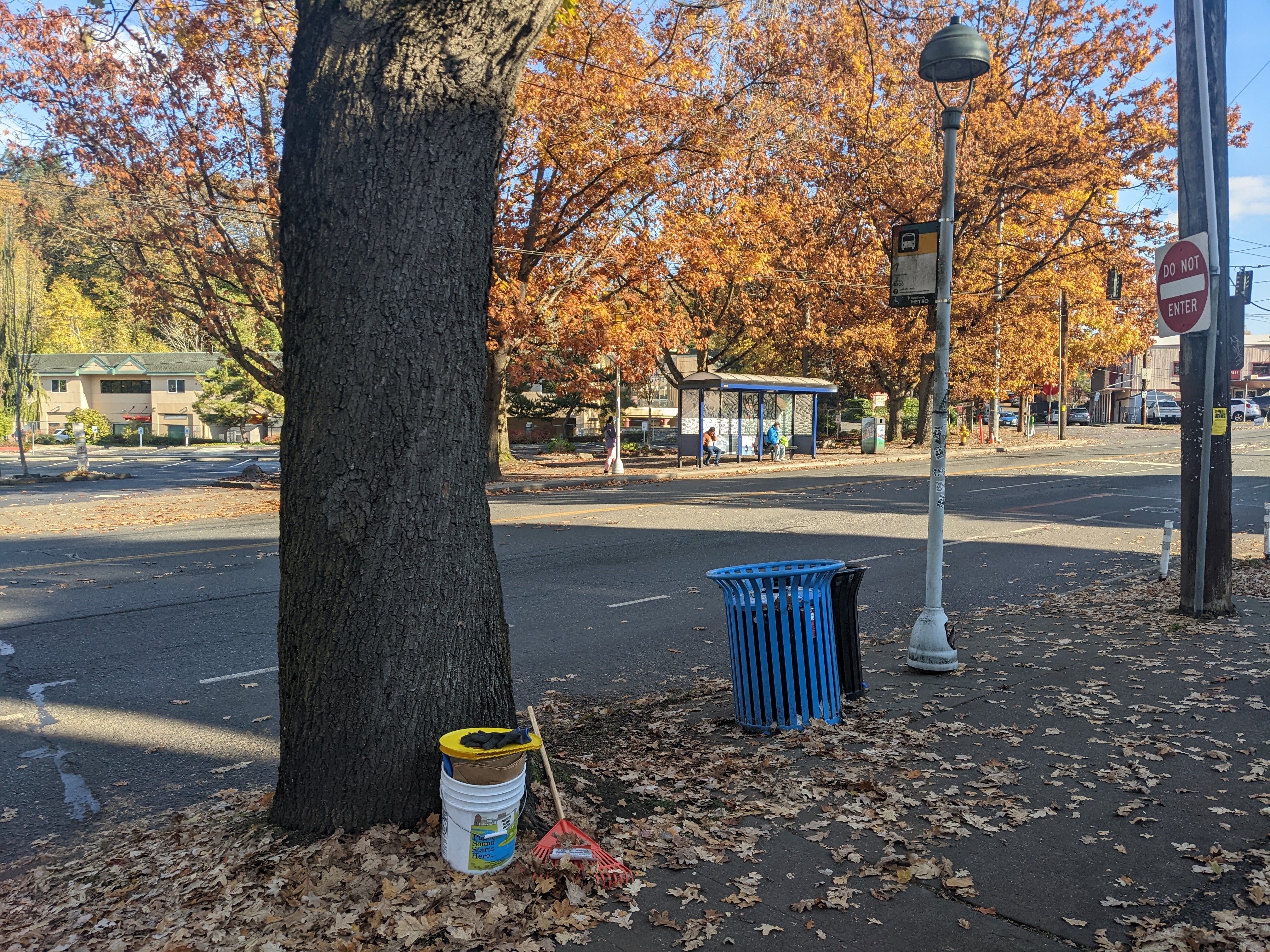 Bus stop after cleanup
Bus stop after cleanup
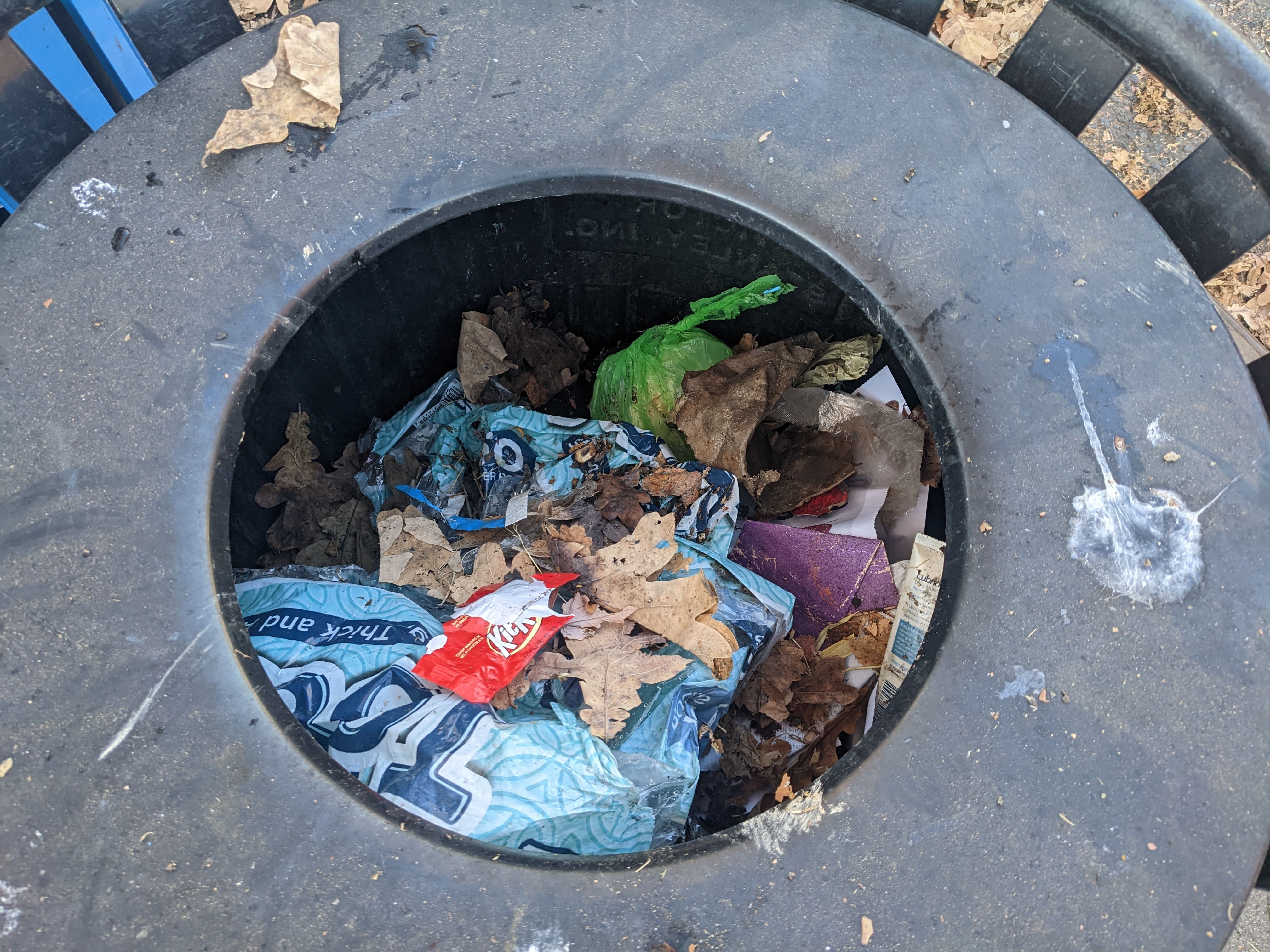 Trash from bus stop cleanup
Trash from bus stop cleanup
There was a shocking amount of trash inside the pile. I found soiled clothing, food waste, bottles, cans, and packaging. It was like someone had done their own major arterial storm drain cleanup and dumped it right next to the trash can. So close! I wonder why they didn’t dispose of it properly. We do pay the utility for trash and compost by volume …
Reflecting on the experience, I first thought that it would be better if some of our tax money went towards cleanups like these. But then I wondered how long it would have taken someone to come clean it up, especially when everyone could assume that the city would clean up our messes for us. I think the first question is a better one: why was it dumped in the first place? And more broadly: what can we do to keep our neighborhoods clean?
For me, part of the answer is simple, and something that everyone can do today: I want to take care of the spaces that I live in and use. Our neighbhorhoods are extensions of our homes, shared with neighbors and visitors. Like infants, these spaces cannot take care of themselves; as the signs seen on roads and highways indicate, they must be adopted. The more adopters, the easier it gets for everyone. I believe this is both responsible and sustainable.
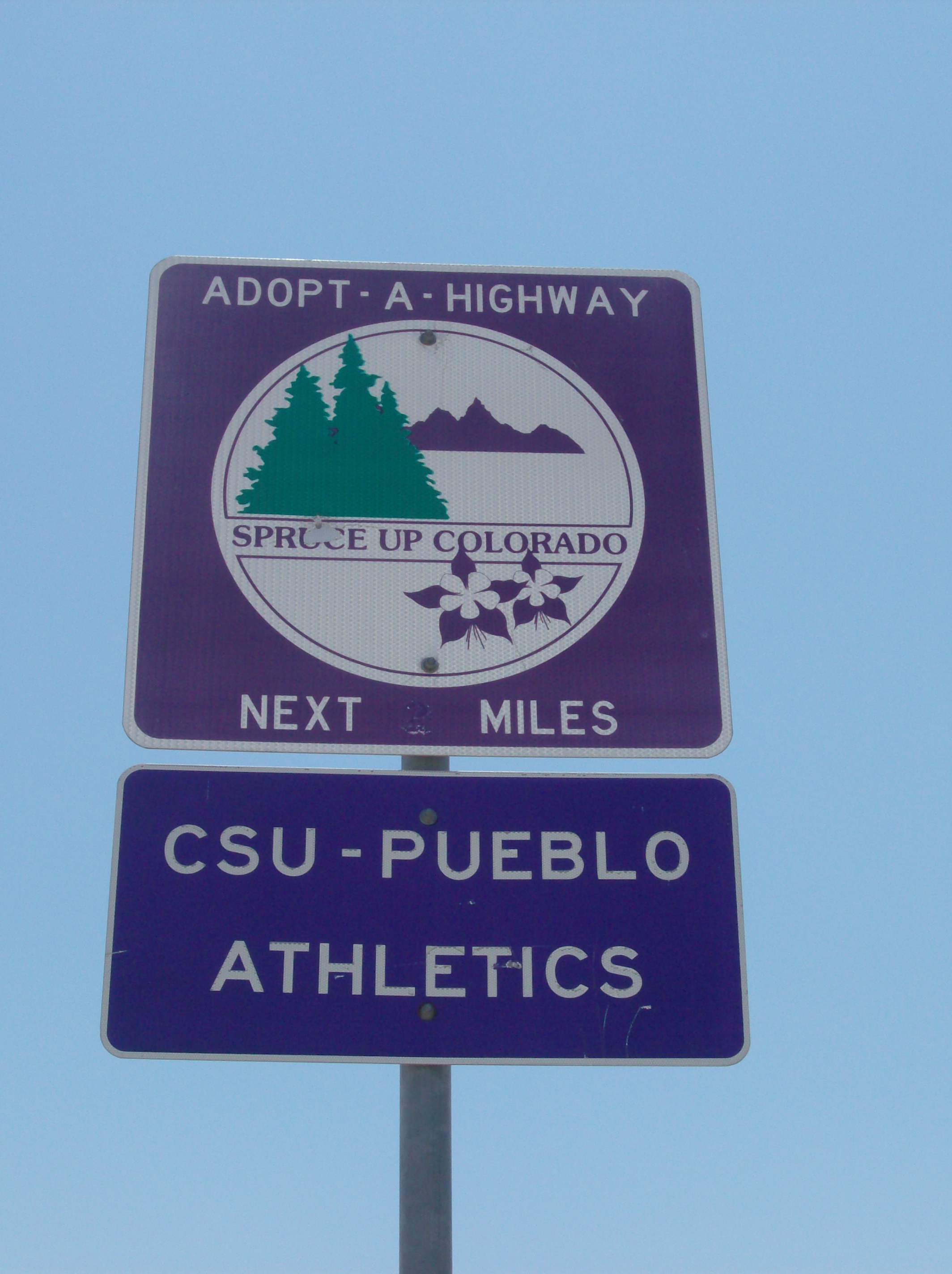 Adopt a highway sign in Colorado, from Wikipedia
Adopt a highway sign in Colorado, from Wikipedia
Where the Sidewalk Ends
After cleaning the bus stop, I felt energized. I remembered a sidewalk nearby that I felt uncomfortable using because it’s covered in dead leaves and trash. I combed through it once with my rake and filled up the entire 5-gallon bucket with trash that included a used can of paint.
While I was cleaning, a man hopped out of his car and asked if I owned the building that I was sweeping in front of. I later looked it up: it belongs to a faceless LLC, and it has been vacant (it looks abandoned) since I moved into the neighborhood. This reminded me again of our shared responsibility as neighbors: we already expect to each other to take care of our own spaces. When we don’t take care of them, the burden falls on everyone else.
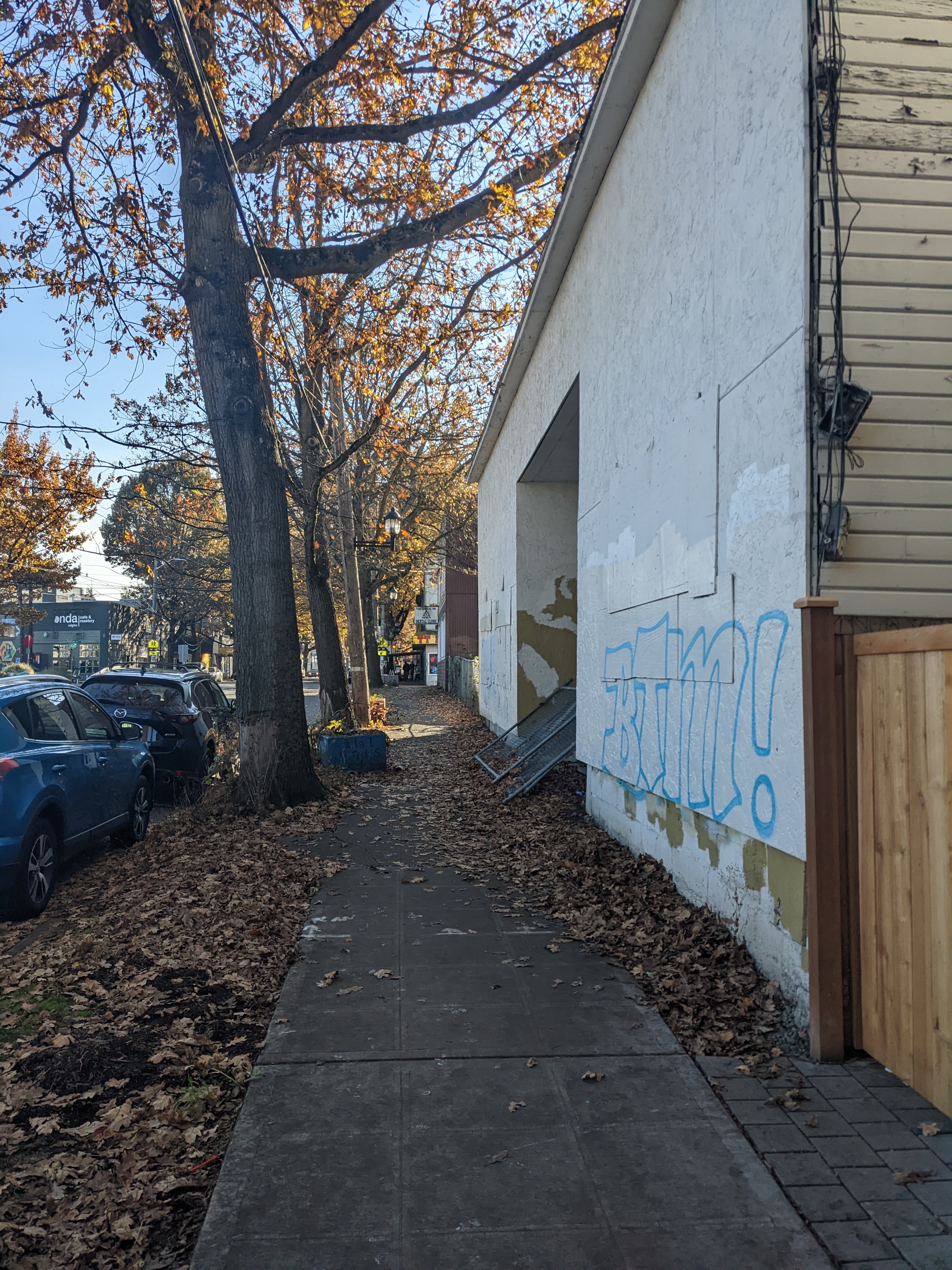 Sidewalk before cleanup
Sidewalk before cleanup
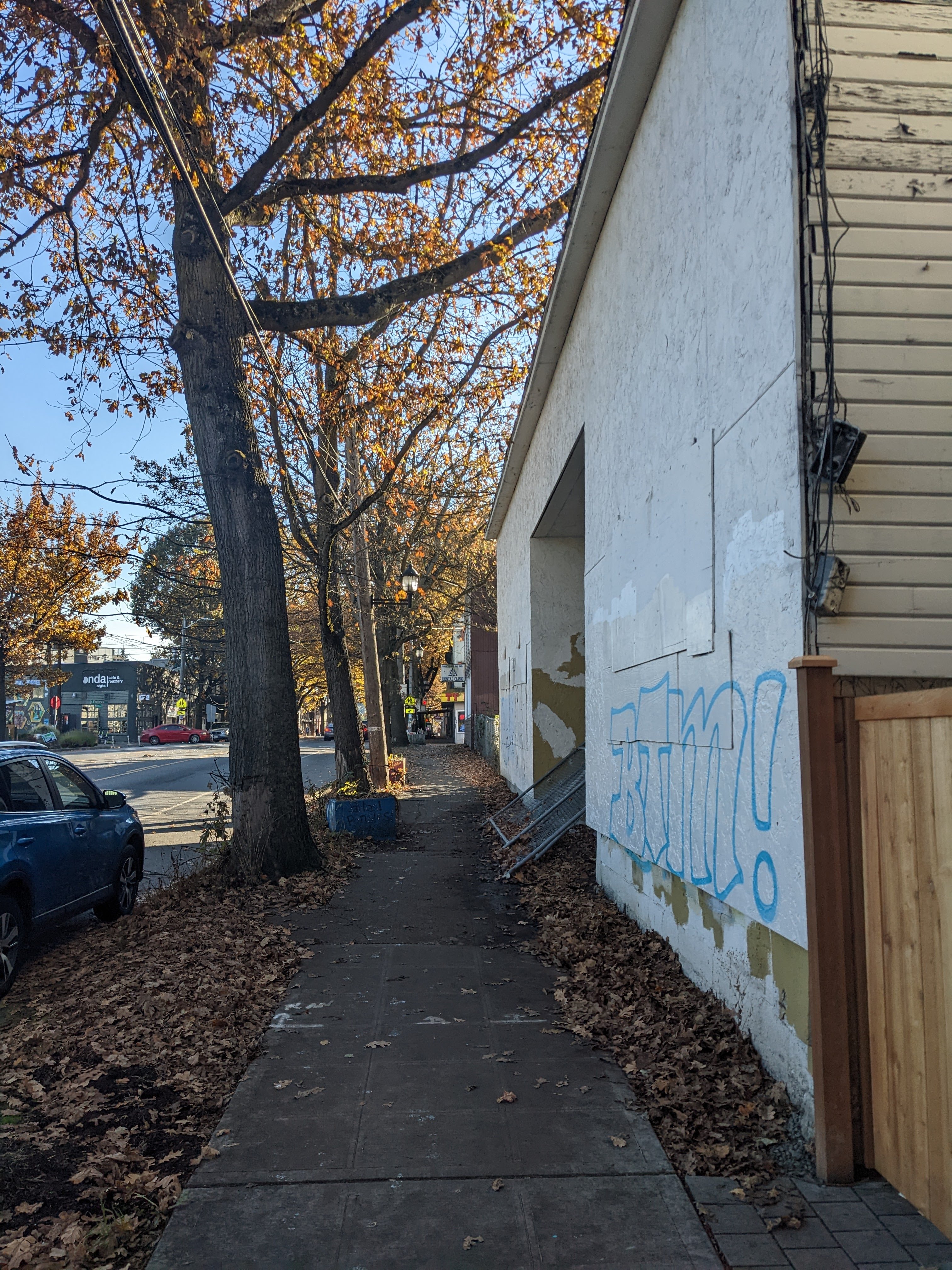 Sidewalk after cleanup
Sidewalk after cleanup
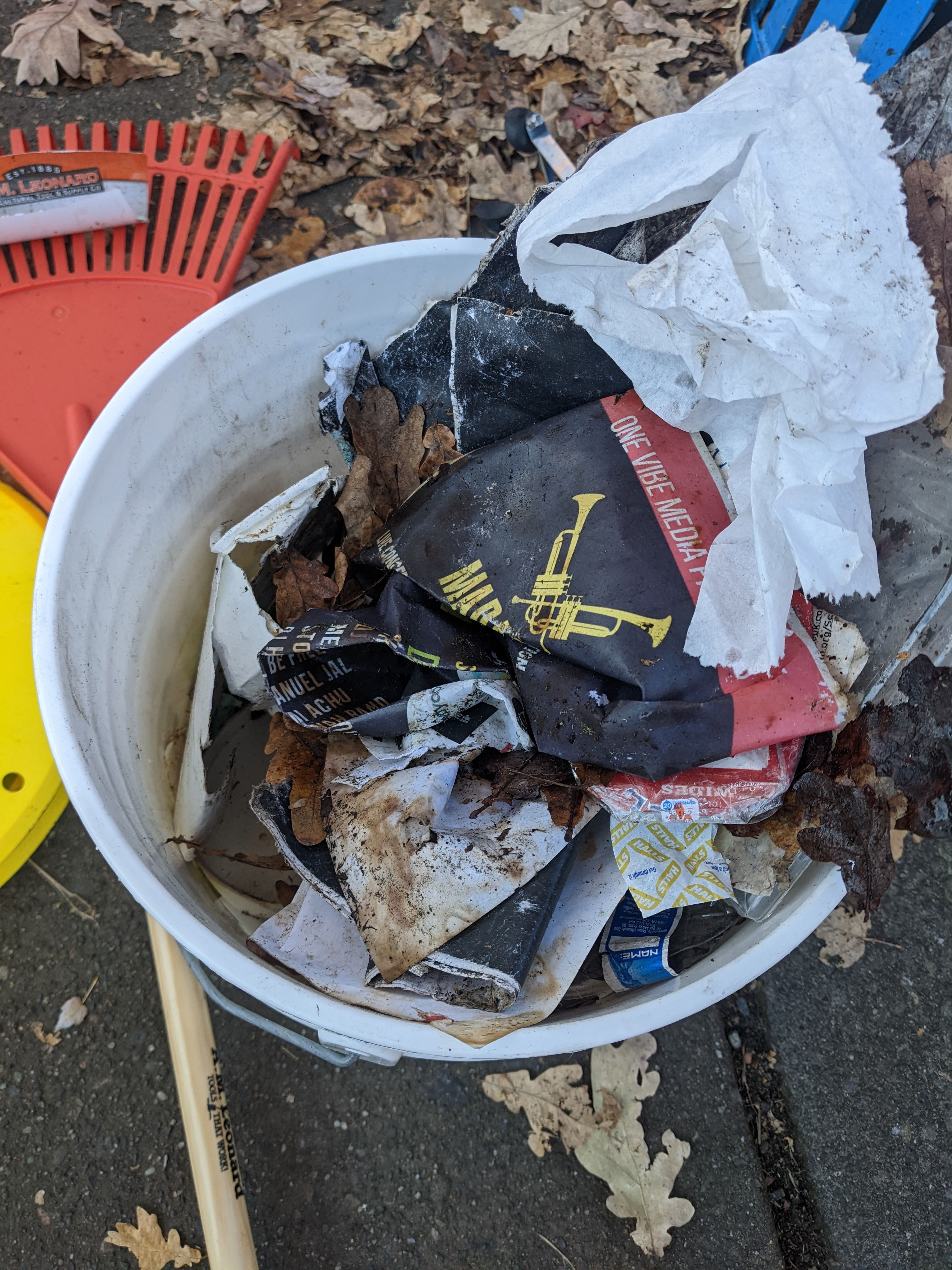 Trash from sidewalk cleanup
Trash from sidewalk cleanup